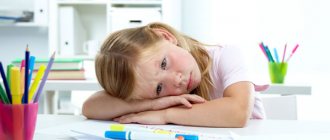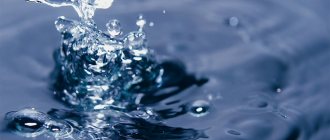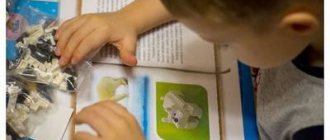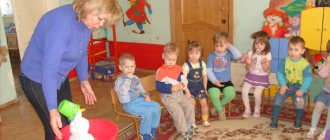Research work of a preschooler. Example
Research work.
Topic: “The Magic of Soap Bubbles” CONTENTS: 1. Introduction……………………………………………………………………………….2 2. Main part: 2.1 Theoretical part…… ………………………………………..……4 2.2. Practical research……………………………………………………….……6 3. Conclusion…………………………………………………………………………………. 9 4. References…………………………..…………………………10 * * * 1. Introduction. It burns like a peacock's tail, What colors are there not in it! Purple, red, blue, green, yellow! A light ball is playing with lights in the open space. Now the sea turns blue in it, Now there is a fire burning in it... There were so many colors in it, There was such arrogance, And he was water and soap, a bloated mixture. S.Ya. Marshak. Relevance of the topic: In the summer, my mother bought me soap bubbles. My brother and sister and I had fun blowing bubbles. We did this while running, and from a height, and blew in different directions and with different strengths. It was fun, but not for long. The solution quickly ran out. We made a new solution. But we didn’t get the kind of bubbles we had. I became very interested in what needs to be added to the solution to make the bubbles bright, large and strong. I asked my mother to help me study the history of soap bubbles and the secret of the solution. Research topic : “The magic of soap bubbles.” Purpose of the study: To study theoretical material on the topic “Soap Bubbles”. Conduct research on soap bubble recipes and identify the most effective ones. Objectives: 1. Analyze the scientific literature on the topic being studied. 2. Conduct a study of the effectiveness of liquids for blowing soap bubbles. 3. Investigate the properties of soap bubbles obtained from different solutions, as well as using different detergents. 4. Draw conclusions. Object of study : solutions for soap bubbles. Subject of research : obtaining large bubbles from different solutions. Research methods: 1. Analysis of scientific literature on this study.
2. Observation of soap bubbles from various solutions. 3. Experiment. Hypothesis: 1. Suppose that soap bubbles are formed from a soap solution. 2. The size and stability of soap bubbles depends on the composition of the bubble liquid. 2. Main part.
2.1.Theoretical part In order to find out how and when soap bubbles appeared, first of all, my mother and I went to the library. Together with the librarian, we tried to find at least some information about soap bubbles. We looked through the children's encyclopedia "Everything about everything", "I want to know everything", and studied other children's encyclopedias. And no information. True, along the way I learned what soap is made from, what detergents are needed for, when the first powder was invented. Time, of course, was not wasted. But I haven’t found anything about soap bubbles yet. Then I asked my older brother to find information on the Internet. and we found... A soap bubble is a thin film of soapy water that forms a sphere with an iridescent surface. When and where exactly soap bubbles appeared remains a mystery to this day. But it is known for certain that during excavations of ancient Pompeii, archaeologists discovered unusual frescoes depicting young Pompeians blowing soap bubbles. This means that bubbles delighted children and adults back in the days of ancient Pompeii. Apparently they had their own secrets for making soap. There is a legend about the appearance of the first soap bubble: one fine day, when soap was finally created, the king, not joking at all, ordered everyone to wash themselves with soap under pain of death. And everyone washed their washcloths that day. Only one old shoemaker named Pumpatus sat hidden in his shoebox. More than anything else, Pumpatus hated washing his neck. Footsteps were heard outside the window. Two huge guards took Pumpatus by the armpits and five minutes later they were leading him to the city prison. In the room where Pumpatus was locked, there was a bathtub with soapy foam and a lot of towels. "Agree?" - asked two huge guards. "Never!" - answered Pumpatus. And he was left to smoke his pipe for the last time. Pumpatus took a drag and suddenly saw a beautiful transparent ball fly out of the tube. The ball flew out the window and shone in the Sun: small rainbows were jumping in it. After the first ball, the second one flew out... Pumpatus looked with all his eyes at the miracle taking place. The passers-by below also raised their heads to look at it. Soon a crowd gathered and a commotion began. Everyone, of course, forgot to think about the fact that Pumpatus was supposed to be executed. The professor, who was invited to figure it out, examined Pumpatus' pipe. “Soap scum got into the pipe. That’s what it’s all about,” the professor announced to the crowd outside the window. Pumpatus, of course, was not executed, and after that soap bubbles became popular not only in one small kingdom, but throughout the whole world! Even in the paintings of Flemish artists of the 18th century, there were often images of children blowing soap bubbles through a clay straw. In the 18th and 19th centuries, children blew soap bubbles using soapy water left over from washing. There is even a myth about the fragility of a soap bubble, but it was dispelled by the Englishman James Dewar, who preserved the soap bubble in a sealed vessel with double walls. An Indiana physics teacher managed to preserve a bubble in a glass jar for 340 days. The students surpassed the teacher - their bubbles were kept under lock and key for many years. A soap bubble is a thin multilayer film of soapy water filled with air, usually in the form of a ball with an iridescent surface. The bubble film is three-layer: it consists of a thin layer of water sandwiched between two layers of soap (soap + water + soap). This fun has long attracted children and adults. Soap bubbles usually last only a few seconds and burst when touched or spontaneously. 2.2 Practical research. After studying the theory and collecting information, I told the children in the group about it. The guys were very interested, they were so interested, they constantly asked me about everything. And then teacher Ekaterina Alexandrovna suggested that we conduct an experiment in kindergarten. And we all started the practical part of my research together. There are many recipes for making soap bubbles. Some of the composition of the bubbles is kept in the strictest confidence, because they allow one to blow truly gigantic soap bubbles, which are even included in the Guinness Book of Records. Others can be found in books or on the Internet. For my work, I chose several recipes. Recipe No. 1. This is the easiest way to make soap bubbles at home. Take 100 ml. dishwashing detergent and add 50 ml of glycerin and 300 ml of water, mix everything thoroughly and you're done! Glycerin is precisely the substance that makes the walls of a soap bubble stronger, and the bubble itself, accordingly, long-lived. Recipe No. 2. It's also not complicated at all. Add 50 ml of clear baby shower soap to a container with 60 ml of water. Add half a teaspoon of sugar. Mix everything and use it. Recipe No. 3. This recipe is much more difficult to make, but it produces bubbles that don’t burst. Water - 600 ml. (hot) add glycerin - 300 ml, drip - 20 drops of ammonia, and pour washing powder - 50 g. The entire composition is thoroughly mixed, infused for about three days, filtered and placed in the refrigerator for about twelve hours. Recipe No. 4. Take soap shavings - 4 tbsp. spoons add 400 ml of hot water. Leave for one week, and then add sugar + gelatin - 2 teaspoons. The solution is ready and you can try it. Recipe No. 5 You need to take 40 ml of baby shampoo without tears, add 60 ml of water, 2 teaspoons of sugar and 1 drop of food coloring.
Progress of the study:
Stage 1 Preparatory. For this experiment we needed the following substances: - distilled water - dishwashing liquid - glycerin - baby transparent shower soap - sugar - ammonia - washing powder - soap - baby shampoo - food coloring - gelatin. - kettle (boiling water). As well as cups, measuring containers, blowing tubes, scales. Stage 2 Preparing soap bubbles.
The compositions of all soap solutions were observed.
While blowing soap bubbles from different solutions, we made observations, took measurements and entered the data into a table. Soap bubble composition testing table. Composition No. Test ….. 1 ….. 2 ….. 3 ….. 4 ….. 5 Soap bubble lifetime ….. 5 sec ….. 10 sec ….. 2 sec ….. 4 sec ….. 8 sec Average size ..... 3 cm ..... 7 cm ..... 3 cm ..... 5 cm ..... 8 cm Maximum size ..... 8 cm ..... 10 cm ..... 5 cm ..... 5 cm ..... 10 cm Out of ten it turned out ..... 7/10 ..... 10/10 ..... 6/10 ..... 3/10 ..... 8/10 Of these small ones ..... 4 ..... 3 ….. 5 ….. 3 ….. 5 Of these large ones ….. 3 ….. 7 ….. 1 ….. — ….. 3 According to experiments, the victory is awarded to soap solution No. 2, and also practically divides with it the first place was solution No. 1 and 5. All other compositions did not show the best results. 3. Conclusion. The hypothesis of the formation of soap bubbles from a soap solution turned out to be correct: soap bubbles actually contain soap and detergents. But in addition to these main substances, you also need to add several components, the main ones of which are water, glycerin, a little sugar, food coloring, gelatin. The water for the solution should be soft or distilled. We have seen from our own experience that the best that can be is laundry and baby soap. For long-lived bubbles, it is recommended to add pure glycerin to the resulting solution. In general, any cleaning liquid will work for bubbles, but the best results will be obtained using the ingredients described. Making a soap solution for blowing soap bubbles at home is a completely doable and interesting activity. Blowing soap bubbles lifts your mood, forgets all your problems, and actually develops your lungs well. All this has a beneficial effect on health. References: 1. How to make soap bubbles 2. Malofeeva N. N. Big book of the most interesting facts. – M.: JSC “ROSMEN-press”, 2010. – P.149 3. Soap bubbles (video).
We recommend watching:
Project in the senior group of a kindergarten Project in the senior group on the topic “Trees and shrubs in spring” Practice-oriented project for landscaping the territory of a kindergarten Educational project. Second junior group
Similar articles:
Educational and creative project on the theme “Golden Autumn”. Junior group
Project for children of the senior group “Our cheerful garden”
COGNITIVE AND RESEARCH PROJECT WITH CHILDREN OF THE PREPARATORY GROUP
Municipal state preschool educational institution kindergarten "Fairy Tale" of a combined type, Kupinsky district
COGNITIVE AND RESEARCH PROJECT
WITH CHILDREN OF THE PREPARATORY GROUP ON THE TOPIC:
“Formation of environmental culture in preschool children through the inclusion of research elements in play activities»
PREPARED BY THE TEACHER:
Elena Yurievna Meteleva
2016
Project:
long-term
Project type:
educational, research.
Duration:
1 academic year
Project participants:
children, teacher, parents.
Target
: Nurturing the child’s personality by including him in cognitive and research activities.
Tasks:
• enriching students’ ideas about the value of nature and the rules of behavior in it;
• development in children of the emotional and sensory sphere and the desire to help nature.
• formation of elements of environmental consciousness in children,
• developing in children practical skills and abilities in a variety of activities in nature, while the activity should be of an environmental nature;
Problem:
Children's level of knowledge about nature is superficial, their attitude towards its objects is unsystematic, which interferes with their ability to understand the world around them, the ability to see the beauty of nature, and the ability to enjoy its beauty.
Project implementation stages:
Stage I. Studying scientific and educational literature
I began my work by studying scientific and educational literature on the topic: “Environmental education of preschool children.”
During the implementation of the project, I studied the literature I acquired on environmental education of children:
- S.N. Nikolaev “Young ecologist”;
- N.N. Kondratieva “We” environmental education program;
- L.A. Samorukova “How to introduce schoolchildren to nature”;
- O.A. Skorlupova “Blossoming spring, herbs”;
- O.A. Skorlupova “Spring, insects, migratory birds”;
- V.A. Baimashova, G.M. Okhapkina “Introducing preschoolers to indoor plants,” etc.
II
.
Selection and development of teaching aids I selected for study with children an interesting manual “Ecological Tales” for working with preschool children by Natalya Ryzhova. Children, in addition to interesting, useful knowledge, receive vivid impressions from the depth, beauty, wisdom, and emotional richness of environmental fairy tales.
The next stage was the development of the “Lapbook” teaching aid. In connection with the implementation of the Federal State Educational Standard, every teacher is looking for new approaches. I began to create and use in my work a completely new, interesting and irreplaceable manual. A laptop is a small homemade folder that a child can conveniently lay out in front of him and view all its contents at one time. But, despite its apparent simplicity, it contains the necessary




